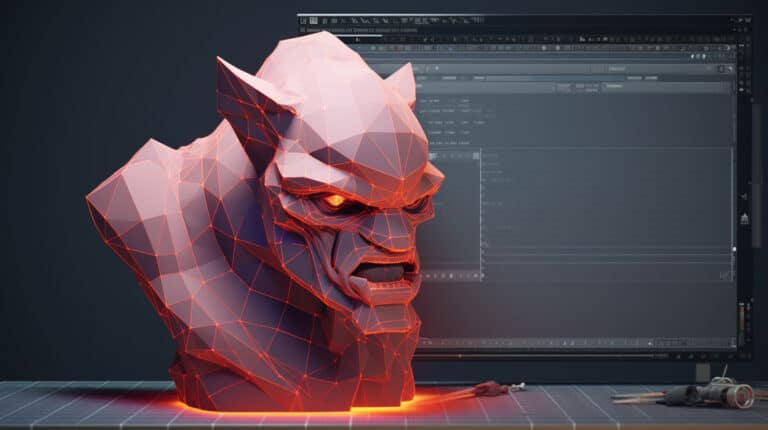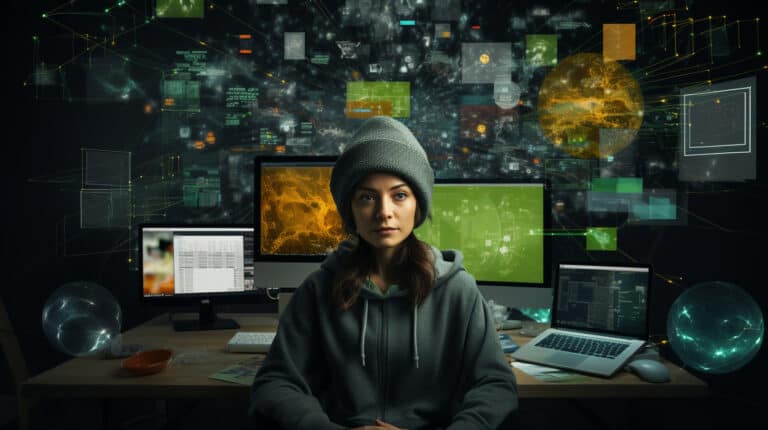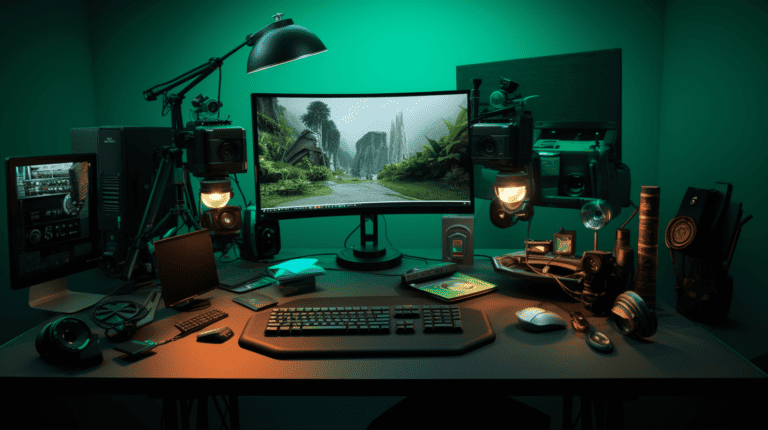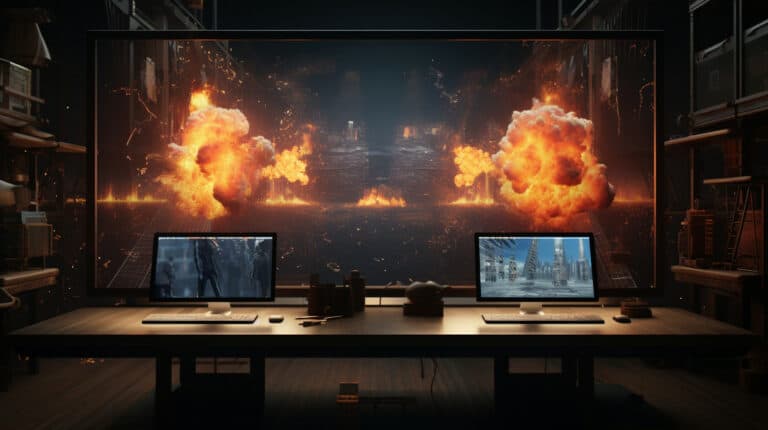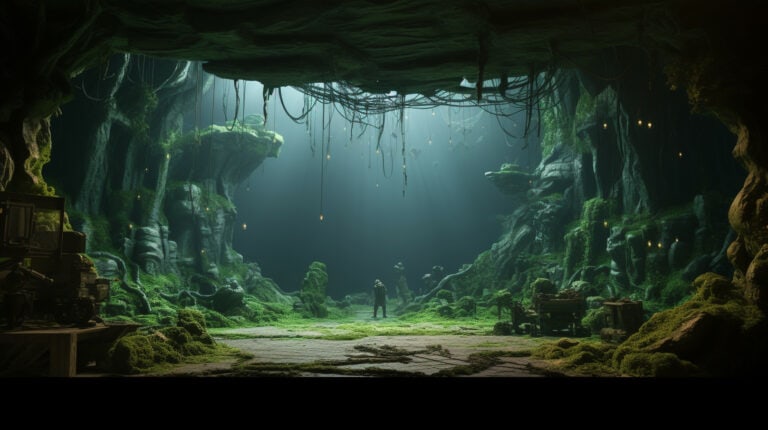Visual Effects vs Special Effects: Understanding the Difference
It’s quite typical for the general public to confuse special effects and visual effects (VFX). There is, however, a significant difference between the two terms. Because of their names, both are concerned with adding effects to a film or video, but the techniques used and ultimate goals might differ significantly.
Let’s look at these two crucial aspects of filmmaking and see what sets them apart and when to use one over the other.
What are Visual Effects?
Visual Effects (VFX) are digital effects that are applied in post-production. This might include green screen (chroma key) work, computer graphics (CGI), set extensions, motion capture, and a variety of other techniques.
What are Special Effects?
Special effects are effects that are generally physical in nature and are achieved on set during filming. Also known as practical effects or special fx, they might include things like explosions, pyrotechnics, technical rigs, and make-up and prosthetics.
The goal of special effects and VFX is to create something that appears real and genuine in the context of the narrative.
VFX and Special Effects are Complementary
Although there is an unpleasant conversation on social media about the benefit and increased legitimacy of using practical effects in a film, there is no reason for this irrational position.
The most passionate supporters of practical effects will generally hold up films like Mad Max: Fury Road (2015), and The Batman (2022), as examples of films without VFX, they often present these films as having entire scenes full of effects wholly captured in-camera. When in reality these films all make extensive use of both special effects and VFX and have countless CGI elements. In most of these films there isn’t a single scene that hasn’t had some form of VFX, however, the VFX and special effects teams have worked so well together that no one can tell where one ends and the other begins.
These are juvenile arguments for people with too much time on their hands, every film should welcome the use of both special effects and visual effects working together.
Types of visual effects
Let’s look at some of the various types of visual effects you may encounter now that we’ve clarified the difference between special effects and visual effects.
Compositing
Compositing is the combining of two or more images to create a single image. In most cases, this will involve live-action footage, referred to as a background plate, and a foreground element that will be incorporated into the background.
Compositing is not necessarily a type of visual effect, rather it is the foundation of the VFX process, where all of the different elements are brought together and combined to create the final shot.
CGI
One of the most popular forms of visual effects in films and TV shows today is computer-generated imagery (CGI). It includes everything from generating entirely digital worlds and characters to adding a modest CGI element into a real-life scenario.
VFX Elements
VFX Elements can be live-action effects such as rain, fire, smoke, explosions, etc., that were “filmed” separately from the background plate. Or they could be computer-generated elements created with software such as Houdini.
Chroma Key
Chroma key is a type of digital effect that involves blue or green screen work. It’s often used to place an actor in a completely different setting or time period that would be too expensive or dangerous to film in. The color of the screen is not restricted to blue or green either, it simply needs to be a solid color that is not found in the subject.
In special situations, such as working with a model spaceship, effects teams have utilized red, magenta, or yellow backdrops.
In Dune (2021) the filmmakers chose to use sand-colored backdrops that gave them the benefit of a solid color that was similar to the color of the background that would be added in post-production. That meant the edges on the actors (especially fine edges like hair) would already have the proper hue and luminance and make the compositing process a little bit easier.
Matte painting & Set Extensions
A matte painting is a digital or traditional painting that is used to create an environment or background that would be impossible or too expensive to film in real life. Matte paintings are frequently used to create backgrounds for scenes set in space or otherworldly locations, but they can be used to create pretty much any type of environment, even ones that could seem mundane.
Similar to a matte painting, set extensions are used to extend or enhance existing sets or locations that were shot on location or on a sound stage. This is often used to add digital elements like buildings or crowds of people to a scene.
In most cases, the lines between matte painting and set extension have become blurred as more and more films are shot entirely on digital sets.
Motion graphics
Motion graphics are computer-generated animations that are often used to add titles or other text elements to a film. They can also be used to create abstract animations or visual effects.
Trial and Error
The best way to learn more about special effects and visual effects is to simply get out there and do some tests. Gather up some friends, buy or build some props, and see what you can come up with.
You could discover that you enjoy the thrill of attempting to achieve a certain effect in practice. Alternatively, you may discover that you prefer compositing digital effects in post-production. The only way to know for sure is to start and experiment, but keep in mind that safety comes first!
FAQs
Are VFX and CGI the same thing?
No, not exactly, CGI is a component of visual effect. CGI stands for computer-generated imagery and it represents one particular technique of visual effects. CGI can also be incorporated into photography, animation, and other disciplines.
How are visual effects different from CGI?
Computer-generated imagery (CGI) is just one type of visual effect. Other common visual effects include matte paintings, set extensions, and green screen composites.
What’s the difference between practical effects and digital effects?
Practical effects are physical techniques that are used to create an effect on set and in-camera. An example of a practical effect would be pyrotechnics or rain or snow to add weather to a scene.
Digital effects, on the other hand, are created using computer software in post-production.
What’s an example of a special effect?
A good example of a special effect would be something like rain, snow, fire, or smoke that is generated in a controlled manner on set.
Do I need to be a computer expert to do visual effects?
No, you don’t need to be a computer expert to do visual effects. However, you will need to have some basic knowledge of computers and be able to use specialized software such as compositing software. If you’re not sure where to start, there are plenty of online tutorials and courses that can help you get up to speed.


